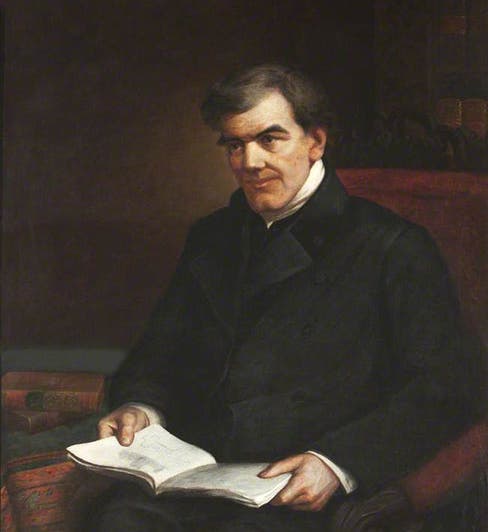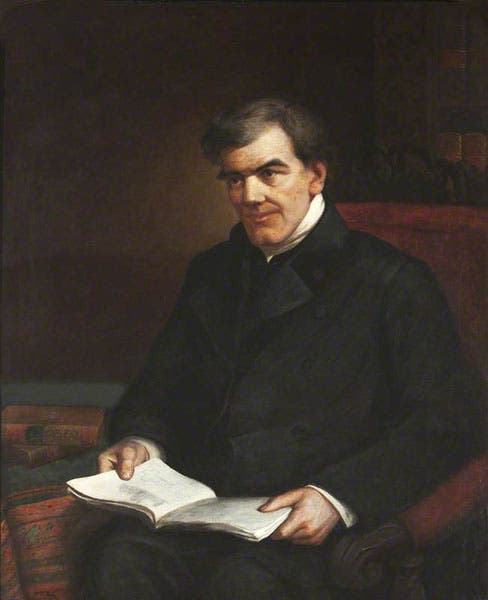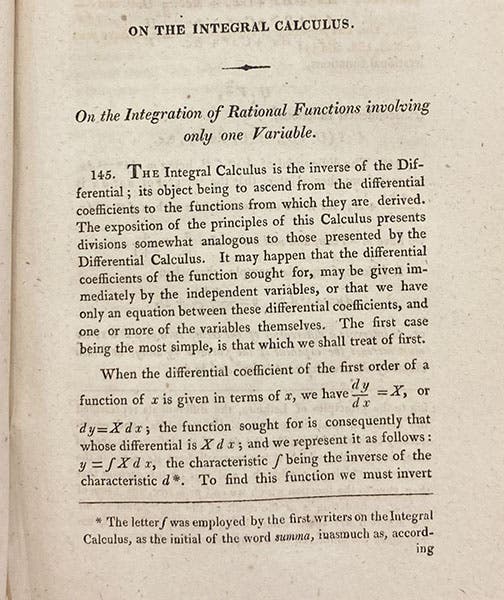Scientist of the Day - George Peacock
George Peacock, an English mathematician, was born Apr. 9, 1791. While an undergraduate at Cambridge University, Peacock fell in with several other students with mathematical interests, including John Herschel and Charles Babbage, who were both one year younger than Peacock, but destined for great things. All three were interested in Continental forms of calculus, which requires a brief explanation. Calculus was discovered independently by Isaac Newton and Gottfried Wilhelm Leibniz in the late 17th century (although Newton always claimed that Leibniz stole the idea from him). The concepts and techniques were the same, but Newton and Leibniz used different notations. Newton had represented the differential by putting a small dot over the variable, while Leibniz used a symbolic notation of the form "dy/dx". French mathematicians, including the great Pierre Simon de Laplace, found Leibniz’s notation superior to Newton’s, and used it exclusively. The English are notorious for preferring anything English, no matter how poor, over any Continental counterpart, no matter how superior, as one may gather by sampling English and French cuisine, so English mathematicians continued to adopt Newton’s nomenclature, which cut them off from French advances in mathematics. Peacock, Babbage, and Herschel wanted to change this. And soon, an avenue opened up.
At Cambridge, in 1812, there were two Bible Societies that were warring with one another about how best to spread knowledge of the Bible and whether to admit dissenters to their ranks. As a way of spoofing such societies, the three Cambridge undergraduates decided to form a society to spread Continental calculus notation. The called their group the Analytic Society, and they first met in 1812 – about 8 of them in all – in Herschel’s rooms to formulate a plan. They soon decided that they should translate a French textbook that explained calculus using Continental notation into English, for use as a text at Cambridge. The book was Traité du calcul différentiel et du calcul intégral, by Sylvestre François Lacroix, originally published in 1797. Babbage translated the first part, on differential calculus, and Peacock and Herschel did the section on integral calculus, with Peacock writing most of the notes. The book was published in 1816 as An Elementary Treatise on the Differential and Integral Calculus. We have the book in our collections (second, third, and fourth images).
One would hardly expect the publication of an English translation of a French mathematical text by three undergraduates to make any difference in the battle of notations, which had been going on now for one hundred years. But Cambridge has something called the Tripos examination, which all undergraduates who aspired to honors had to take. In 1818, Peacock became a moderator for the Tripos, writing the questions for the maths sections, and he used only the Leibnizian notation for the Tripos. If you did not know it, you had no chance. Two years later, Peacock’s place as moderator was taken by William Whewell, three years younger than Peacock, who had joined the Analytic Society a little later and was perhaps the most brilliant of them all. He too used only Leibnizian forms of notation and refused to accept the Newtonian forms. By the time Whewell was done as moderator, calculus had been transformed at Cambridge. They called it the triumph of "D-ism" over "Dot-age." If you have taken calculus, you know that the triumph was complete. The Analytic Society was truly the Little Engine that Could.
The story of the Analytic Society and the reform of English calculus has been delightfully told in The Philosophical Breakfast Club (2011), by Laura Snyder, although, be warned, if you go looking there for more about Peacock, you will not find it, for the book discusses primarily the work and interaction of Babbage, Herschel, Whewell, and Richard Jones. If you seek more information about any of these four, you will find it in glorious abundance.
We have added here, just because I have never seen such things included in a discussion of Peacock, some pages from the textbook Peacock and his friends translated, including the title page, the Advertisement, which mentions the respective roles of the three student translators, and the first page of Part II, The Integral Calculus, which shows the preferred Leibnizian “dy/dx” notation.
The only portrait I know of Peacock, from which all others are derived, is one in the Royal Society of London, painted after his death in 1858 by Douglas Blakiston (first image).
William B. Ashworth, Jr., Consultant for the History of Science, Linda Hall Library and Associate Professor emeritus, Department of History, University of Missouri-Kansas City. Comments or corrections are welcome; please direct to ashworthw@umkc.edu.










